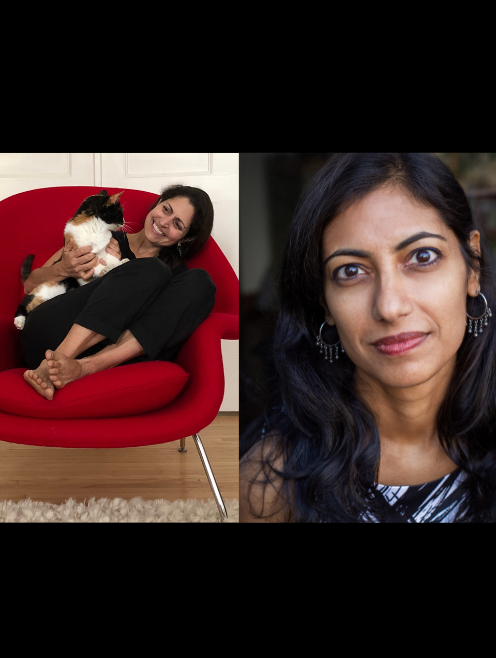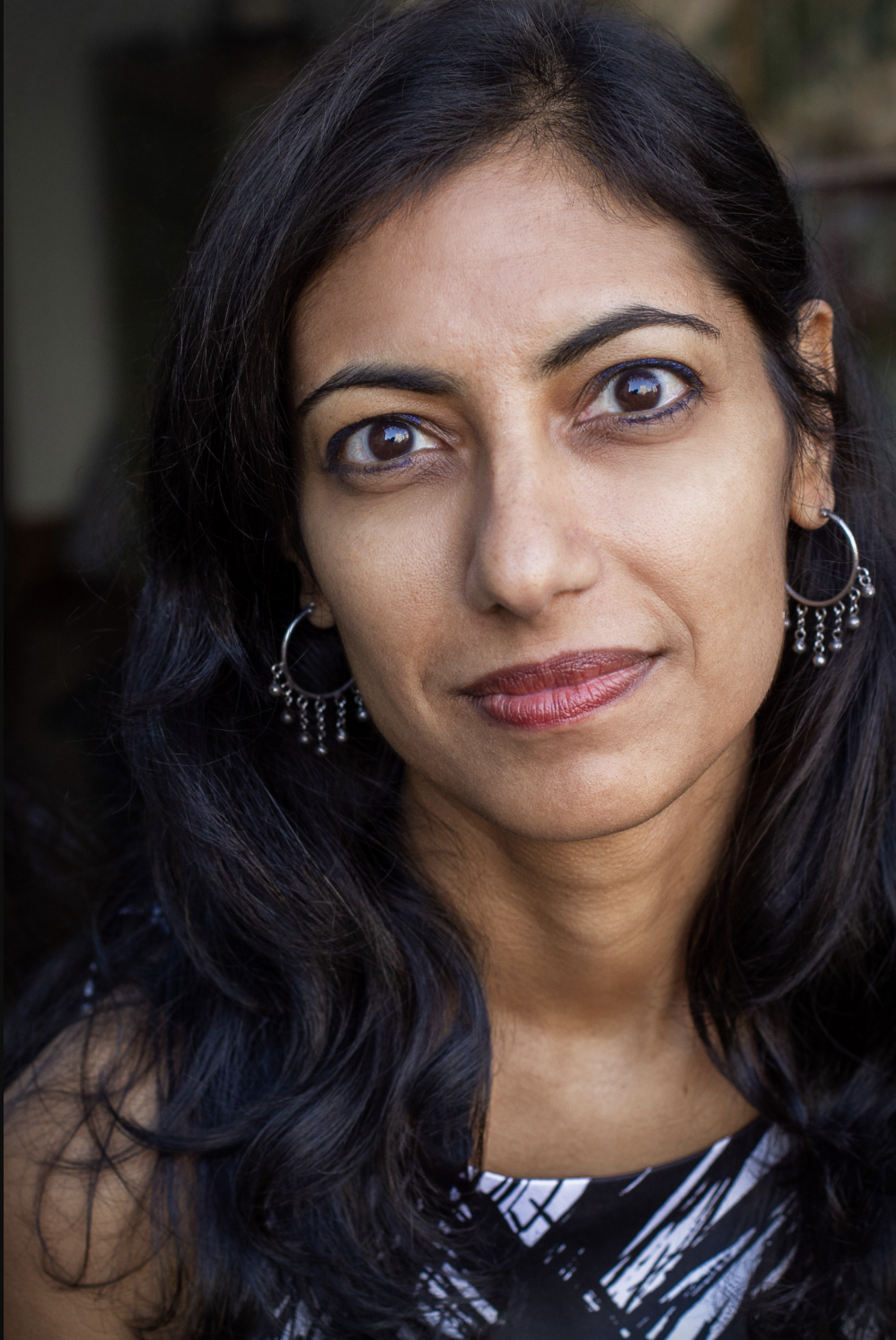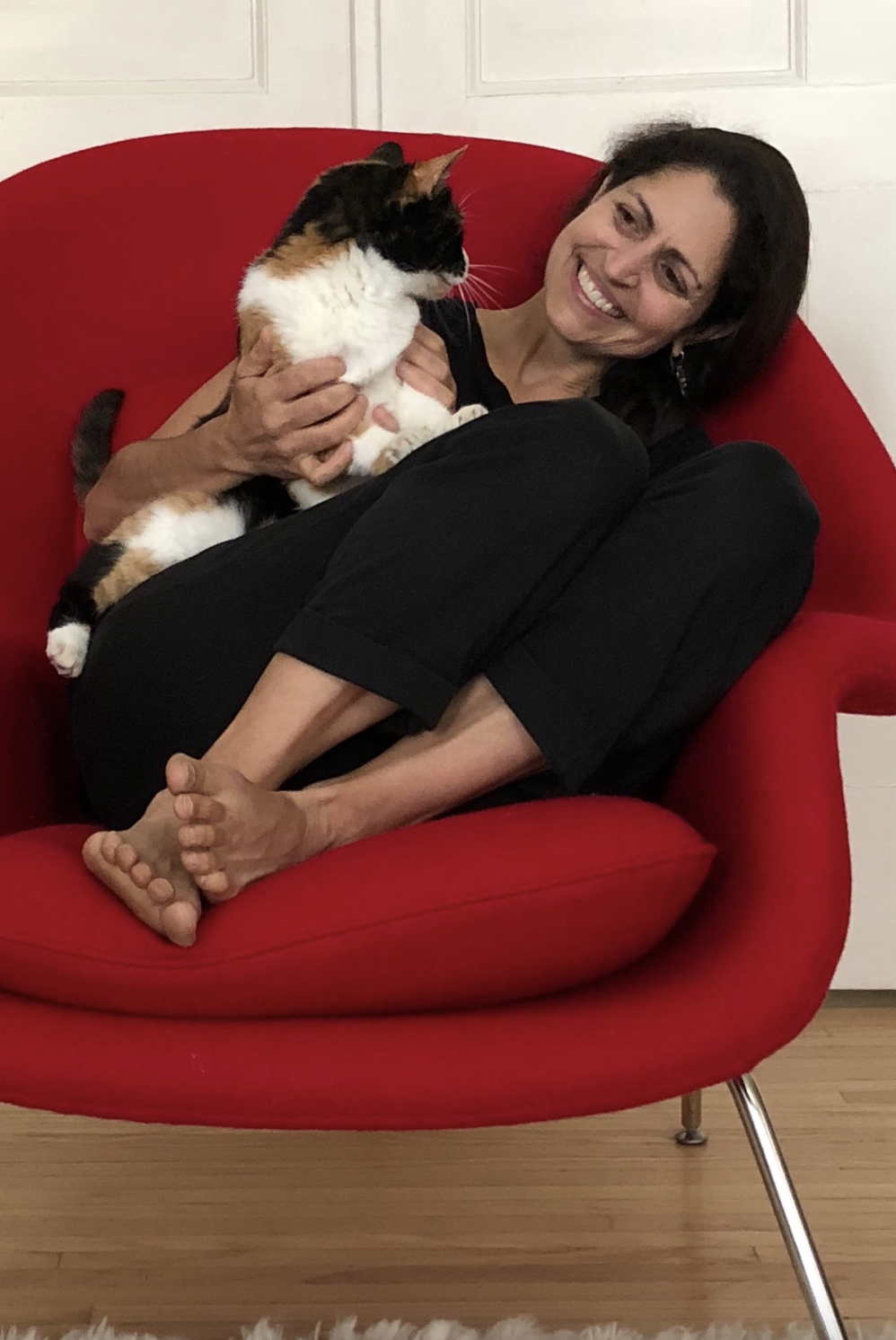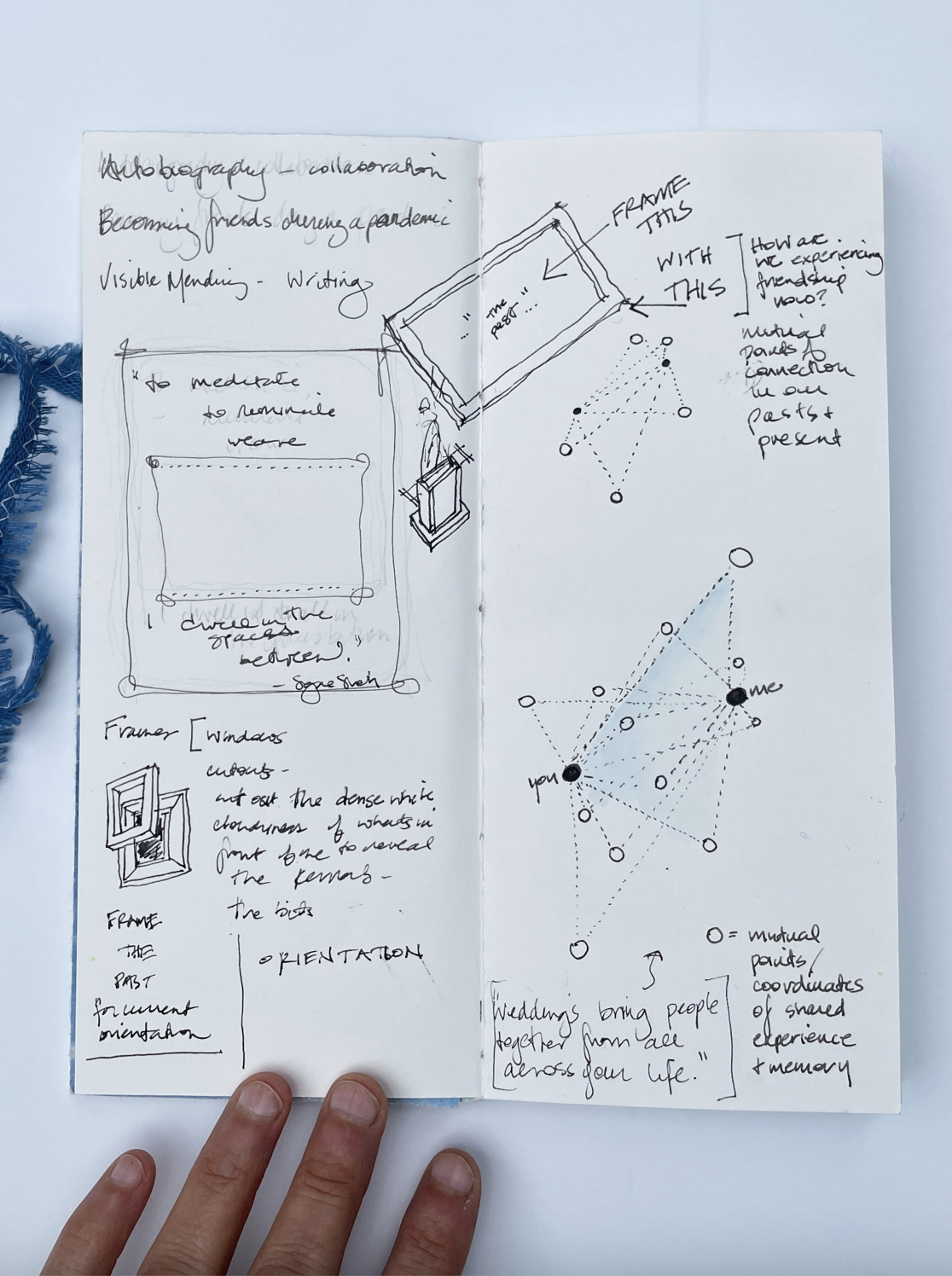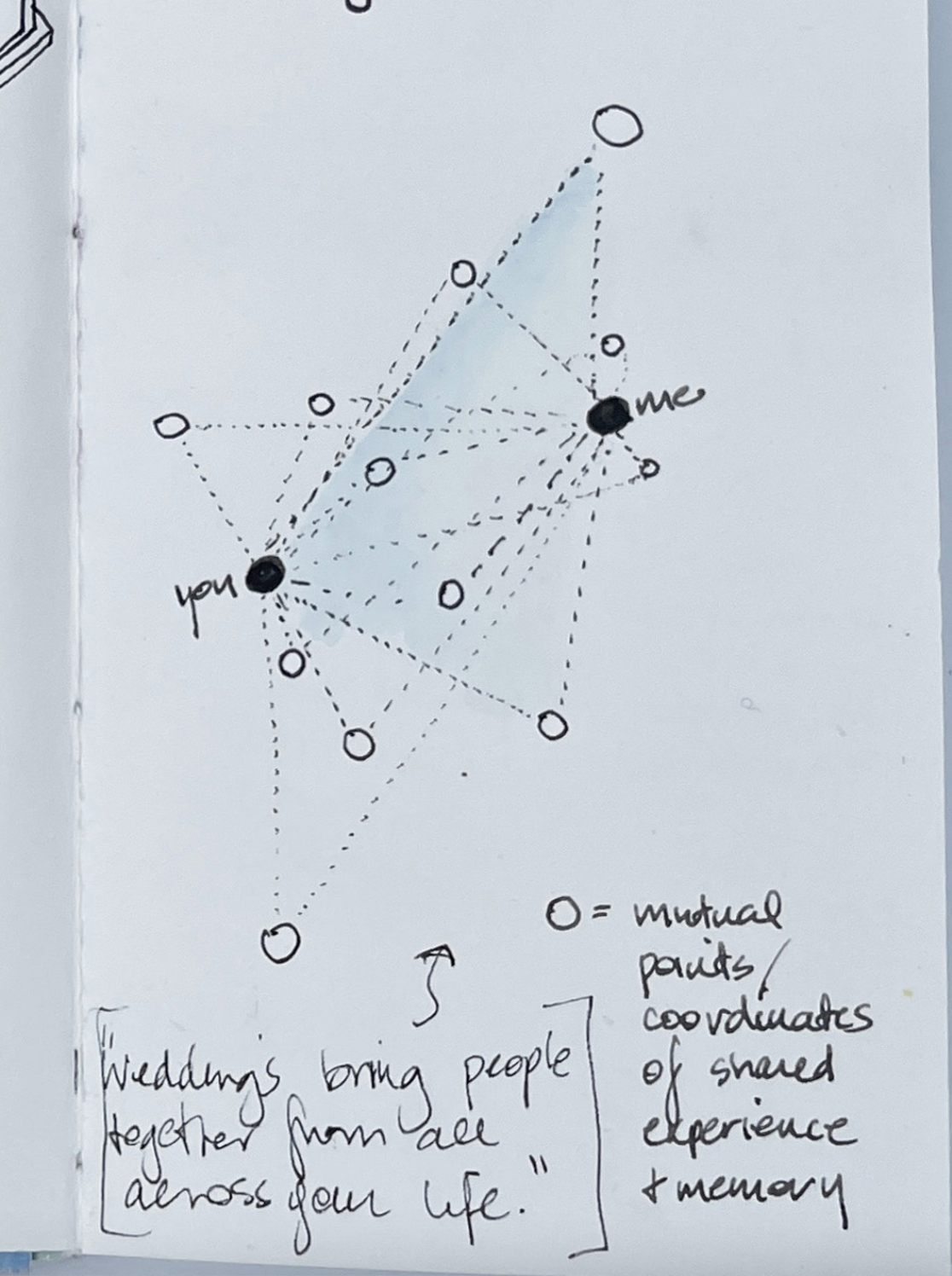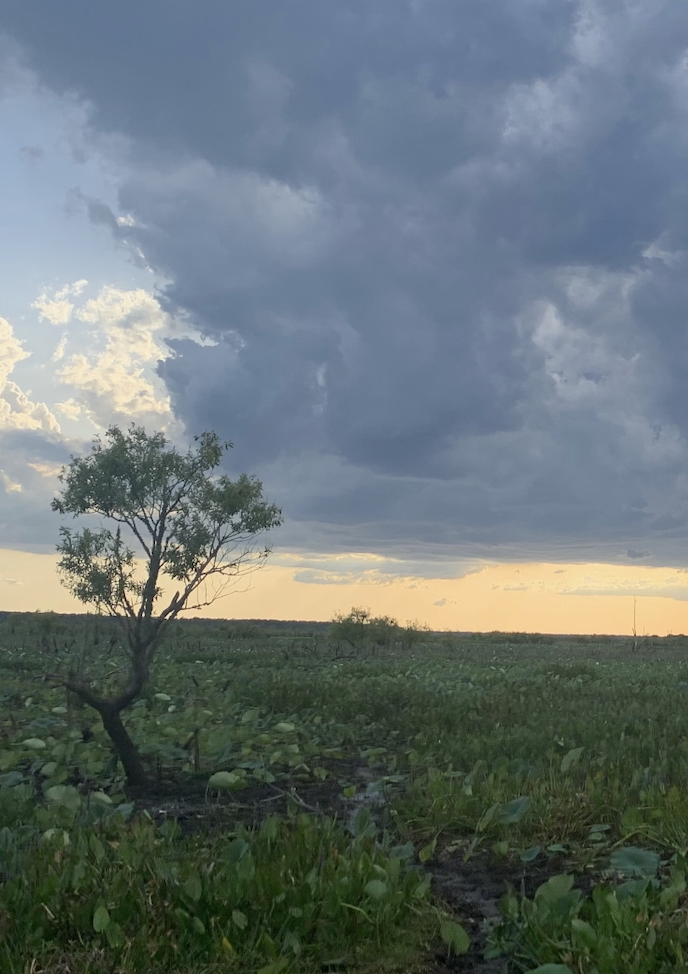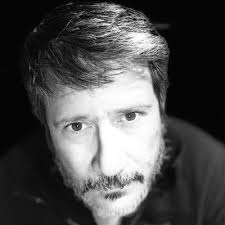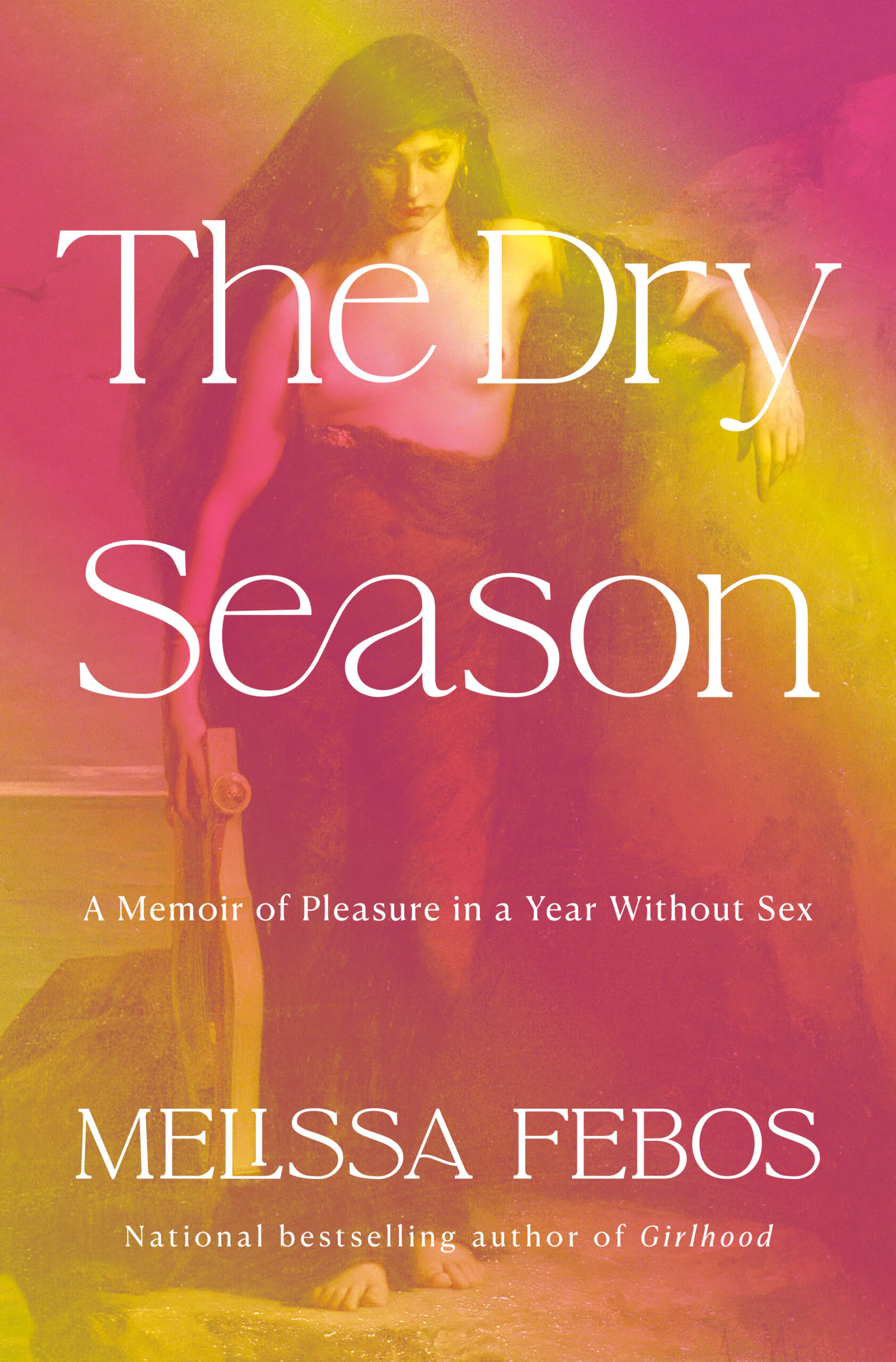KIRIN MAKKER and SEJAL SHAH interviewed by ABBEY FREDERICK
“I am a reliable witness to my own experience”—a line from Lacy Crawford’s Notes on a Silencing—has become a refrain in Sejal Shah and Kirin Makker’s friendship. They met in 2020, just before the pandemic began, drawn to each other in part by similar experiences of betrayal at the hands of two institutions that often give legitimacy and legibility to women—marriage and academia—and by their longing to forge new forms of intimacy, learning, and support all their own. For Makker and Shah, conversation is a generative force for affirmation and transformation. This interview fuses several conversations conducted virtually with Abbey Frederick during the spring of 2021, in which they discuss making connections outside conventional routes, collaborating across distances, and creating space as women artists for ourselves and for one another.
Abbey Frederick: How did your collaboration begin?
Sejal Shah: I’d read a little of Kirin’s writing about Main Street: she was writing about concepts I didn’t feel like I had language for—place and space and the built environment—and I thought, here is a person who’s in a different discipline than I am, and she’s also a person of color living like me in a somewhat isolated area, hours away from any major city. So I reached out to her, although we didn’t connect initially.
I also knew that Kirin had been at UMass, and my experience [as an MFA student] there had been complicated and honestly so traumatic. What helped me get through it was finding interdisciplinary and collaborative spaces like Asian American Studies and Women’s Studies—I had to look outside of my official discipline in English and creative writing. It’s that Adrienne Rich quote, from “Invisibility in Academe”: “There are others like you”—I just had to look outside, elsewhere.[1]
Kirin Makker: It wasn’t until I read Sejal’s neurodiversity essay [in the Kenyon Review] that I realized this was really someone I needed to know. Someone had posted it online somewhere, and I read that essay in one sitting—I mean, it was the middle of the day, and I did not have time to read this essay, but it was so powerful to see that there was another Indian American woman in Western New York, who was around my age, who was writing about betrayal—betrayal by academia, which was something I was feeling very deeply at the time.
This was also at a moment in my life when I was trying to expand beyond Geneva and make connections in other communities. I knew I wanted to find new people to collaborate with. I vocalized this wish to all my friends and acquaintances. But it takes a lot of work to actually cultivate. It’s very difficult, and I think part of that is because we’re raised in classrooms; we’re raised to imagine only certain kinds of partnerships. And because of that, it takes a lot of work to actually make something happen outside of the bubbles and structures that we usually use to work with other people. And I think I recognized that in Sejal—that she was someone who was interested in that too.
AF: Right—not just in working together, but in redefining the ways we are taught to learn together.
SS: Yes, and I was interested in that, even if I hadn’t articulated it quite that way to myself at the time. I did, and do, have a strong network of friends and colleagues, but many of them are not local, and they all mostly have institutional affiliations. And at this point I was post-academic. Being in academia had been such a huge part of my identity. I think Kirin and I were both searching for a world outside of academia.
KM: We started writing to each other, and it was incredible to me—ever since I was a little girl, I was longing for a friend who looked like me, who was brown like me, who had the same fears I did, a similarly complicated relationship to whiteness… And I had sort of given up on ever finding that. It’s a kind of romantic dream, the dream you have as a little girl of that sort of friendship. And so when Sejal dropped into my life, and we discovered we were born the same year, there was this incredible synchronicity. Reading her memoir was like reading about myself. It was like reading about my own life.
SS: I grew up in Rochester in a very white suburb without much language around race, and the existing language was about race focused on a Black and white binary.
KM: And I grew up in Cleveland, where it was very similar—there were white people and there were Black people and that’s what race was. That’s another thing Sejal and I share.
SS: But at the same time, there are so many differences in our experiences.
KM: There’s a tendency to focus on, maybe, the fact that we were both Indian—Asian American—or that we both went to the same graduate school, but even if those were some of the initial things that connected us, there’s so much more beyond that really meant we became friends.
SS: And we need those full stories in order to push back on the danger of a single story, right? And also, even though we had all these points of intersection, there wasn’t anything in the infrastructure that was going to help us meet.
KM: Yes, like there are all the conditions that make you stay in a bubble of people and make it so hard to find communities outside institutions. And that’s part of the way spaces and events are laid out. I think that’s something colleges are just finally starting to understand: that their public events often don’t come across as public—especially at private colleges. Nobody knows where to park, nobody knows where to go, or if they should feel welcome or not…
SS: And what I’d found is that sometimes it means you have to look outside, to create your own structures that are meaningful and sustainable.
KM: Early on when we first became friends, I found myself processing all this through diagrams. I would do these drawings trying to understand how startling it was how connected I felt to this person I’d just met.
SS: The first thing we collaborated on was an image for the “As if a Girl Matters” project. A writer I know had put out a call for artwork to honor the memory of Asifa Bano, an eight-year-old Muslim girl who had been a victim of sexual violence by Hindus in India —she was abducted, gang raped, and murdered. I wanted to participate in this memorial, this way of remembering and responding to such a tragedy, of bearing witness and bringing attention to this horrific act. But it felt difficult to do on my own. And I didn’t consider myself a visual artist enough to participate—
KM: —and I didn’t consider myself Indian enough.
SS: So I asked Kirin if she’d collaborate with me, and she made this painting in response to some words I’d written about it:
What Matters
Is attention and the growing storm
But it’s been there all along.
How much hate grew in them, tall, was learned, in order to not protect a child.
To let the darkness be more, to suffocate, and worse, four days,
For them to want her to suffer
for them to refuse to see a beloved girl.
Across the world I am stripped of words
To even say one thing is not enough
To say nothing is worse

KM: And I remember we were so excited about it. We were like, “oh—so this is how it happens!” Then we started our postcard collaboration; I’d make a painting and send it to her, and Sejal would write something on the painting. We were both playing with these ideas about cutouts and windows and frames, framing the past—past self, past experience, past ideas—through the present.
SS: We were also talking about our processes, and how to make process part of our work, how to make it visible: it was something I hadn’t thought about—how to approach a writing project the way you might approach a project in the visual arts.
KM: That’s a problem in publishing, I think—there are so few ways to talk about a work as anything other than your own. But we don’t create work in vacuums. Like, in Sejal’s book, the acknowledgments are so long—she unpacked the process, she didn’t just tell us who the people were but how they were important to the making of the book. That’s something that I think the world of writing can learn from the world of visual arts and design: this idea that the process matters, is as important as the product, and doesn’t need to be invisible.
AF: We’ve been talking about space at a kind of macro scale—institutional, public spaces—but this is also something that happens at private scales, especially during the pandemic when people weren’t gathering, and collaboration had to happen in our houses and virtually. How do you find space for your own creative work as an independent artist?
KM: We both grew up in suburban houses, and you start to see the plans of these kinds of houses in fixed ways; rooms have fixed uses. I’m thinking about where my mom did her sewing—and it was the basement, it was the laundry room. We’ve both had to reimagine how rooms can be used, to make space for our creative practices, especially since the pandemic.
SS: My primary habitat is a house I share with a partner, and at points, it felt like that was supposed to be the only community I needed. I’ve often felt like I really couldn’t relate to a lot of my friends who’ve been married since their late twenties.
KM: Yes. If you’re not married to a man and not caring for children, it’s hard to know how you fit into society, whether in white America or the second-generation immigrant experience. When I was married, it gave me some kind of legitimacy and legibility, which I lost again when I divorced. Living child-free is just not part of our popular lexicon, but it gives me the ability to live with endometriosis and to have an artistic practice, collaborate, and teach.
SS: Especially with the cultural background we both have, it’s harder to live the kind of lifestyle that doesn’t follow an expected path. Artists’ lives often don’t follow predictable, linear, or even visible trajectories. People see weddings and babies and understand those things as milestones. But I wanted a book more than anything else. [My spouse] and I talk about my book as our “book baby”; it was a shared effort that we both put a lot of time into to be able to put out into the world.
KM: And the milestones of our personal lives are bound up with our concepts of space and place. We understand who we are in concert with where and when we are. Because of that, space is bound up with constraints relative to personal struggles as well as societal pressures. We are constantly negotiating our agency in space. So that could be, for example, within a personal relationship with another person, or your relationship with your own body or chronic pain—but then also your relationship with patriarchy, your relationship with racism, with these big structural things. Our occupation of space is happening at multiple scales at once, overlapping.
This is maybe why Sejal and I have spent so much time talking about where and when we have been, and where the points of intersection and longing are. We needed to make sense of our mutual desires to occupy space in all these different ways. There’s an idea Karen Frost-Arnold—she’s a feminist scholar—writes about: the philosophy of trust. She says that when you don’t have a sense of trust you don’t know where you are; it’s like you’re unmoored, you have no orientation, and you don’t know what’s real. Conversation between us has been powerfully grounding.
SS: Conversations with other people, other artists, are part of how we know, part of how I come to know myself. I think of bell hooks’ foundational book, Talking Back, and her words about how to make and find and hear your voice—you have to speak. You have to talk back. You have to speak it into being.
Sejal Shah is a writer, interdisciplinary artist, and teacher of writing. Her debut essay collection, This Is One Way to Dance, was an NPR Best Book of 2020 and included in over thirty most-anticipated lists including Electric Literature, Lit Hub, the Los Angeles Times, The Millions, Ms. Magazine, and PEN America. The recipient of a 2018 New York Foundation for the Arts Fellowship in fiction, Sejal is also the author of the forthcoming story collection, How to Make Your Mother Cry. Find her online at sejal-shah.com and @SejalShahWrites on IG and Twitter.
Kirin J. Makker is Associate Professor of American Studies at Hobart William Smith Colleges. Trained as an architect, educated as a scholar in critical space theory, and an artist at heart, Makker works to bridge not only disciplines but their methods of producing knowledge. At her institution, she teaches courses on storytelling, power, and space, using drawing, sewing, and performance art to investigate complex scholarly questions in real-time and space. Her research on these topics takes several forms, including regular work on ongoing participatory art projects, exhibiting her artwork in juried shows, and producing scholarly writing on women’s and Black history in design and urban planning. To see what she’s working on and what her students are making, follow her Instagram @kirinmakker.
Abbey Frederick is an artist and poet from upstate New York. She works as a design editor for Seneca Review and Essay Press, and her writing has appeared in DIAGRAM, Interim, Art Journal, and elsewhere. She lives and studies in St. Louis, Missouri, where she’s a student in the MFA program at Washington University St. Louis.
¹This is a paraphrase of a line from “Invisibility in Academe.” The longer passage reads: “When someone with the authority of a teacher, say, describes the world and you are not in it, there is a moment of psychic disequilibrium, as if you looked into a mirror and saw nothing. Yet you know you exist and others like you, that this is a game with mirrors. It takes some strength of soul—and not just individual strength, but collective understanding—to resist this void, this nonbeing, into which you are thrust and to stand up, demanding to be seen and heard.” Sejal references the quote in “Matrimonials,” an essay in her first book, This Is One Way to Dance.
